

Suunto Blog
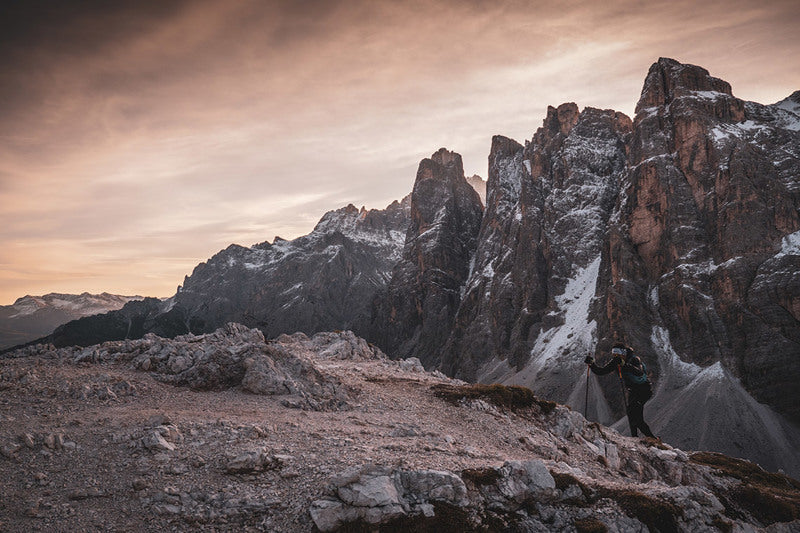
Know your species of cloud
One of the fun activities to do in the outdoors is identifying different species of flora and fauna. It’s about more than knowing names; the process of identification brings us closer to the world around us and tells us what’s going in that habitat.
The same can be said for knowing the different species of cloud. Being able to recognise the different types of clouds and what they’re doing tells us what’s happening with the weather, and when our risk is increasing or decreasing. This is an especially important skill for those who spend a lot of time in the mountains.
We talked to Sarvesh Garimella, the chief scientist and COO at MyRadar, a Suunto partner, about the different varieties of clouds and what we should look out for when we’re planning to head into the great outdoors. A keen hiker since his field research days at university, Sarvesh has a Phd on ice clouds in the atmosphere. Who better to ask then? Here are Savesh’s 10 tips.
Click to find out more about MyRadar’s detailed local weather forecasts!
Download MyRadar Wear OS app here.
Respect the mountain
At a really high level, clouds are one type of information your surroundings are giving you. We can also look at recent weather and trail reports about an area. And one of the most important recommendations that has been echoed to me again and again is to know your limits and respect the mountain. There could be hazards you are prepared for and others you aren't prepared for. No climb or trip is worth your life. Be smart and live to climb another day.
The trend is your friend
In forecasting we like to say this phrase a lot: "the trend is your friend." If you’re just looking at what the barometer is saying in one moment that’s less informative than observing what the trend is. Or if you’re looking at a model of rain output, the model that came out an hour ago might not show as much output as the model that came out just now does. If you look at the next model an hour later it might be showing more rain. Each successive model is showing more and more rain or whatever phenomena. Whether it be simple observation of the environment or more sophisticated analysis of weather models, the trend is your friend. Just because you have a snapshot of what’s going on now that doesn’t mean you have a complete idea of what it could turn into, especially in a complex environment.
Sarvesh regularly hikes in the Pacific Northwest.
Know your cloud
The World Meteorological Organisation (WMO) has an International Cloud Atlas that consists of 10 genus of clouds within which there are many species of cloud. Within the species of clouds there are lots of different varieties. The WMO website has flow charts and guidance to help you identify what specific types of clouds you are looking at.
The big three
For most people I say there are only three types of clouds to think about. Those are the cirrus clouds, which are the wispy ice clouds that tend to be higher in the atmosphere. Most of the clouds you see that are puffy and popcorn-like are cumulus clouds, and those tend to be scattered and independent. Then you have stratus clouds, the decks of extensive, and low to medium altitude clouds. These are the low clouds that stretch out as far as you see that produce gentle spitting rain. There is a qualifier for various types of clouds: whenever you hear the word nimbus it refers to rain. Cumulonimbus clouds, for example, can turn into a thunder head. So the big three are: cirrus, cumulus, and stratus clouds.
1. Cirrus clouds
2. Cumulus clouds
3. Stratus cloud
Watch the low clouds
In addition to those three main types of clouds you can also classify clouds by their altitude. Low, medium and high clouds. It’s good to identify what could be happening in the low cloud decks versus the middle or high cloud decks. If you see there are a few wispy cirrus clouds in the morning, and then you see a few more in the afternoon, that could suggest there might be more moisture entering into the region, but it might not pose an immediate risk. But if your low cloud decks seem sketchy and visibility is poor you might like to wait another hour or two for the sun to come up to see if it burns off the fog. I’ve been on climbs where we’ve definitely had risk issues with the low or medium cloud deck, especially on Mt Rainier.
Not all clouds are bad
When I see a stratus deck that is low and consistent, with spitting rain, that’s a good sign for me because it means it’s not the nicest from a hiking standpoint, which means there is going to be less people out on the trail. Just because you see rain it doesn’t mean you are going to have a bad time.
Beware of lenticular clouds
Here's one particular example especially relevant for mountain climbing; a lenticular cloud. These are the lens shaped clouds that sit on top of mountains. They tend to form when you have moist air moving across the landscape, which gets kicked upwards by the mountain itself. They are pretty to look at, but what you have to keep in mind, especially on the leeward side of the mountain, is it means you get lots of vortex shedding from wind coming over the mountain. Pilots know to stay away from lenticular clouds because the turbulence there can be really bad. Wind risk can be more significant than any other type of hazard depending on the mountain you are on. If you see a lenticular cloud it suggests that there might be windier conditions as you get closer to the summit.
Watch for vertical extent
The thinner, wispy clouds higher up are less of an issue to look out for than low clouds. The stratus decks can produce steady, low intensity rain, but from a hazard standpoint they aren’t particularly dangerous. If you have instability in the atmosphere or the chance for developing thunderstorms, that is the sort of hazard you want to look out for. If you notice the cloud cover is significantly higher than it was first thing in the morning or the vertical extent of the clouds is increasing then its ability to start producing rain also increases.
Be aware of cooling
If you feel the air getting cool and if you can see the pressure is dropping this might be because a weather cell is moving towards your area. The up and down draughts and the rain and the cooling effects of the rain can change the weather pretty dramatically. That can be a sign of quickly changing weather. This is one of the reasons why My Radar has the precipitation nowcasts; they warn you when it sees a cell on a radar that you might not necessarily be able to pay attention to. Remember, the trend is your friend.
Read trail reports
The trail reports put out by the fire service, the AllTrails App and such are definitely important as well. Many of the hazards are only present if the trail is in a certain condition. If you have lots of wind that might be okay if you have lots of traction. But if you have ice on the ground and also gusting winds that’s another issue.
Add MyRadar Wear OS app on your Suunto 7 to get detailed local weather forecasts on your wrist.
Lead image: ©Philipp Reiter
Other images by Marc Thunis on Unsplash
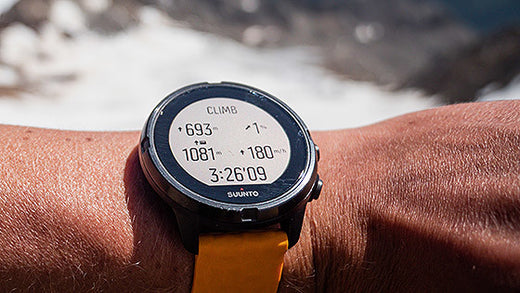
Boost your hill training with SuuntoPlus Climb
Hill repeats are an essential part of an outdoor athlete’s workout repertoire. To make the hard work pay off, pacing is key. The new Climb SuuntoPlus™ feature does just that: it gives you real-time insights on your effort and motivates you to keep going.
The same goes for longer hikes, too: once you learn what kind of ascent speeds are sustainable for you, you can use this feature to pace your way up accordingly.
To use SuuntoPlus™ features on the Suunto 9 or Suunto 5, activate them before starting an activity: Select your preferred activity type and – before hitting start – go down to the options menu and select your preferred SuuntoPlus feature, like Climb. The SuuntoPlus feature you chose, will be added and available as an extra screen during the session.
© Philipp Reiter
Top left: Ascent and climb counter
After you have activated SuuntoPlus Climb your watch will automatically detect the uphills and also create laps of them. The first climb is triggered after ascending for 10 meters.
During the climb you will see the ascent you have covered during that particular uphill on the top left on your screen. Once the climb ends, the ascent number will switch to the total number of climbs you have covered. When the next climb starts, you will again start to see the vertical meters for that individual climb.
Top right: Grade %
On the top right you have the grade of your uphill in percentages. The same goes for the downhill, too. The arrow shows the direction of the hill. The grade is based on your progress during your recent efforts.
Bottom left for running: Normalized Graded Pace
During trail running and running your running speed is shown as Normalized graded pace (NGP). Normalized graded pace is the adjusted pace, that reflects the changes in grade and intensity that contribute to the physiological cost of running on varied terrain.
Bottom left: Total vertical meters
For activity types other than running this view shows the total vertical meters covered during the activity.
Bottom right: Vertical speed
Vertical speed is a great way to pace an effort in an uphill lap. This also helps you estimate how long the climb will take for you – if you know the total ascent. The vertical speed is shown as meters per hour.
Note: SuuntoPlus Climb works best with watches that have a barometric sensor, like Suunto 9. Products without a barometer rely on GPS based altitude. This will require longer climbs as small changes in elevation may not be identified.
Lead image: © Philipp Reiter
Read more about hill repeats
7 tips to accelerating your uphill speed
Improve your running with high intensity hill repeats
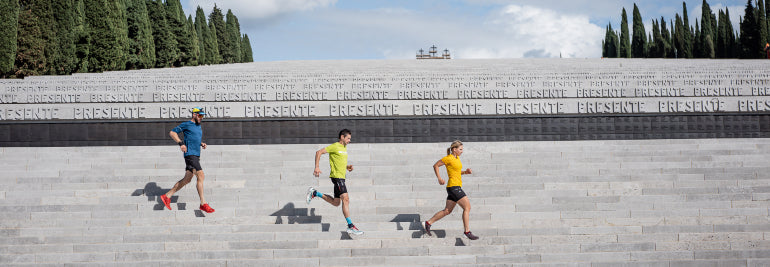
This relay run shows we are stronger together
© Nicolas Holtzmeyer
Ten athletes from Germany, Austria and Italy took turns to run the historic 850 km frontline where Italian and Austrian troops fought during the First World War.
They have completed the epic adventure run that aimed to observe Italy’s annexation of South Tyrol 100 years ago and to also celebrate how far Europe has come since the hostilities and wars of the 20th century.
Teams of two took turns to run, carrying a baton with a Suunto 9 attached, while the rest of the athletes visited the historic sites of the former frontline and talked to local people about the history.
The 850 km run, with 55,000 m of elevation gain, began in Grado, an Italian seaside town, and finished in Stelvio Pass in northern Italy.
AlpsFrontTrail initiators Philipp Reiter and Harald Wisthaler shared updates about the team’s progress and experiences. Check out short videos from each of the seven days running below!
Day one
Day two
Day three
Day four
Day five
Day six
Day seven
Day eight
Review the adventure on Instagram or at AlpsFrontTrail!
Lead images: © Philipp Reiter
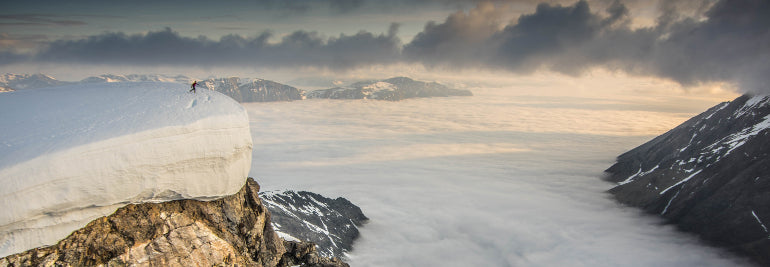
Kilian Jornet starts initiative to protect mountain ecosystems
© Kilian Jornet Foundation
Suunto ambassador and mountain athlete Kilian Jornet has spent all of his life exploring, training and racing in some of the world’s most beautiful mountain landscapes. He started out life in a mountain hut in the Pyrenees, spent his youth training there, and then went on to set FKT records on many of the great summits of the world. Up in the mountains, far away from the madding crowds, is where he feels most at home.
Which is why now he wants to give back to the incredible environments that have sustained him. Climate change, pollution, habitat and biodiversity loss, are all degrading mountain and alpine ecosystems. Over the decades of racing and performing, Kilian has witnessed this firsthand.
“I’ve been climbing mountains and crossing glaciers my whole life, and I have observed how the effects of climate change have been devastating,” Kilian says. “We all have a role in reversing this tendency and ensuring that the next generations are able to not only play in the mountains, but are able to live on a healthy planet.”
© Matti Bernitz
Inspired to try to be part of the change, Kilian has founded the Kilian Jornet Foundation, which aims to preserve mountain environments through research, direct action and education. “I have been taught since I was a kid about the need to protect the environment, and I have done as much as I can with my own hands,” Kilian says. “Now, I want to take a step further and help projects, organizations and individuals that dedicate themselves to preserving the planet. The planet needs all the help we can give it.”
The first project the Kilian Jornet Foundation will support is the study and investigation of one of the most visible victims of climate change: the retreat of glaciers. Studying this is key to developing projects to conserve these ice masses that hold between 60 and 80% of the planet's freshwater. To do this, the Foundation is partnering with the World Glacier Mountaineering Service (WGMS) of the University of Zurich in Switzerland. For more than 125 years, this program has been gathering standardized observations of glacial change, and their fluctuations.
The funds collected will go to different initiatives promoted by the World Glacier Mountaineering Service, from measuring devices and equipment for researchers to education programs for schools, among other things.
“The Kilian Jornet Foundation is born to reach goals that individually we’re not able to achieve, to share knowledge and skills for the common goal of preserving the mountain environment and fight against what endangers it,” says Pau Ylla, director of the Foundation. “Climate and other changes need to be addressed comprehensively and it is essential to gather data and raise awareness of the importance of small actions for the change of the global system affecting mountains.”
Lead images: © Kilian Jornet Foundation
Read more articles
Run wild for nature!
Six ways to plan a route for your next adventure
Start your path to mountain navigation mastery here

Run wild for nature!
Anyone who spends time in the great outdoors ends up revering nature and wanting to protect it. And it needs our protection more than ever with study after study showing the planet’s ecosystems and wild animal population are in steep decline because of human activity. We must move to stop this now.
You can be part of the change by becoming one of the million runners that Adidas Runtastic and its partners are calling on to lace up and run for the one million species currently threatened with extinction. To add your voice, sign up for the Run Wild Challenge on the adidas Running app, pick one of three animals to compete with, and get moving!
The Run Wild Challenge aims to inspire and educate runners by sharing knowledge and stories about three particular animals: Adjany the elephant, Tendrel Zangmo the tiger, or Pamoja the pangolin. When you sign up for the challenge on the adidas Running app, you’ll follow one of these three threatened animals through their habitat as you try to keep up with the kilometers they travel daily. As you do, you’ll learn more about their ecosystems, the foundations and people working to protect them, and more ways you can get involved to support them.
In partnership with the United Nations Environment Programme and Internet of Elephants, adidas Runtastic’s Run Wild Challenge will prove that athletes and outdoor adventure types are calling for new global efforts to protect the natural world and endangered species. They will take the results of the Run Wild Challenge to the UN General Assembly Biodiversity Summit this September.
To connect your Suunto app account with adidas Running, open Suunto app and tap “Profile”. Then click on “Connect to other services”. Select adidas Running and enter your adidas Running login details to connect the two apps.
Hop across to the Run Wild Challenge on adidas Running app and add your voice now!
Learn about Suunto Compatible partners
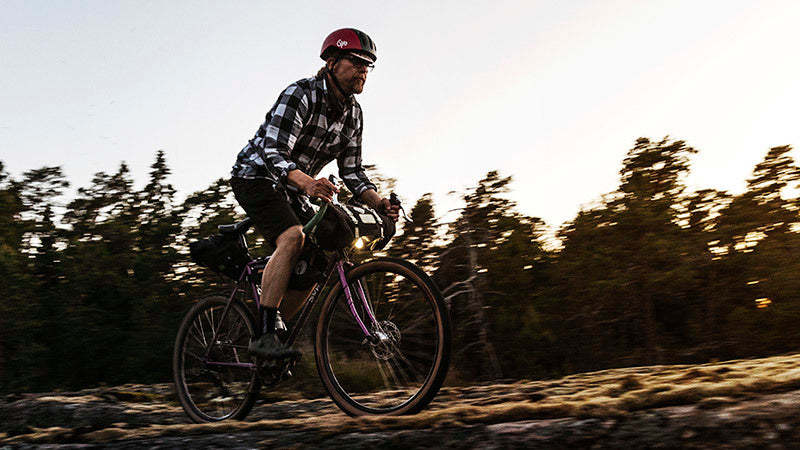
Six ways to plan a route for your next adventure
An essential part of outdoor adventure is planning. The better you are at it, the smoother, safer and more relaxed your trips.
Of course, there are many aspects to planning, from understanding the topography and distances, through to knowing your group and managing rest breaks. However, knowing your route is key. When that’s sorted everything else is more likely to flow.
Whether you want to start from scratch, use an existing route or something in between, here are six different ways to create a route for your Suunto watch to guide your next adventure.
Suunto app’s route planning capabilities are very versatile. Depending on the situation you can use the most suitable option – even on the go as all these work on your mobile.
Planning a route from scratch is just one of the many route planning options on Suunto app.
Plan a route from scratch
Just opening the map and starting to draw your own route is probably the first route planning method that comes to people’s minds. Just mark the starting point and key points along the way to draw the desired route to your destination.
Tip: To help the route planning process you can choose whether you want to follow “any road or path”, “all road types”, “all road types avoiding hills”, “paved roads” or “free drawing”. Using the most suitable option will make planning more efficient.
Plan using heatmaps
Suunto Heatmaps show the tracks frequently used by Suunto community all over the globe, based on millions of activities. Turn the heatmaps on and choose the desired activity type. Suunto heatmaps are sport specific. This allows you to differentiate between activities, for example, running and trail running. Heatmaps can be on while planning routes. This enables you to see where the popular trails are.
Tip: Suunto app also has “My Tracks”, a new feature showing where you have been during the last week, month or a year. Compare your own tracks with the general heat to spot areas and trails you haven’t yet been to.
Suunto app recommends popular routes for your location.
Use popular routes on Suunto app
When browsing Suunto app’s map view, you can swipe up a menu of route recommendations: the app automatically generates popular routes for the location you have selected. Simply select an activity type, see what others have been doing and select one you like.
Tip: If you want to see more route options, zoom out or change the location for your search and tap ‘Search here’.
Use an existing activity
Would you like to do that awesome run from last year again? Or has your friend been to an interesting trail? You can use existing activities to create routes. All you need to do is tap the three dots on top right of the activity screen and select ‘Save route’. The route then opens in Suunto app’s route planner so you can name the route and sync it to your Suunto watch.
Tip: If you want to find your old activities more easily,, add a trail name, location etc in the description field. You can then search for them in your Diary on Suunto app and create routes for navigation.
You can sync routes to Suunto app from Suunto compatible route services, like Wikiloc, and get access to their planning tools and route libraries.
Sync from a partner service
Suunto app is compatible with several route planning services, like komoot, Fatmap, Wikiloc, Twonav Land, Openrunner and2bulu (in China). Connect your Suunto app account with the partner service to get routes created there to be synced with your Suunto app – and your watch. You can find thousands and thousands of routes in the partner services and also use their tools, like route libraries, desktop apps and big screen solutions. (Learn more about Suunto's partners.)
Tip: Some of our route service partners are included in Suunto Value Pack. Learn more about it here.
Import a GPX file
Have you spotted an interesting route in the media or perhaps a race organizer has offered you the race route as a GPX file? To get that route on your watch, save it in a location you can access on your phone and open it using Suunto app. (Learn how to import a GPX file on Suunto app for iOS or Android.)
Tip: You can also share or save your own routes as GPX files using Suunto app: Go to the list of your routes and click the sharing button. Then select whether you want to share the route or save the GPX file.










































































